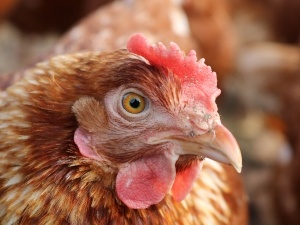
Chicken combs may seem like a decorative addition to your bird’s head but these body parts play a very important role to these birds, the bird’s comb can help you figure out if the bird is healthy or not.
If your bird’s comb suddenly looks dry then this article is for you.
Table of Contents
Chicken’s comb looks dry:
How a chicken’s comb looks can be a great insight into what’s going on with the bird. This body part isn’t meant to be dry, but if your chicken’s comb is dry then reasons behind this may include:
Dryness:
A chicken with a dry comb may simply be a chicken with a dry comb, if your bird’s comb is dry then the bird’s wattle may become dry as well.
What to do:
You can use products like VetRx to moisten the bird’s comb.
This product is usually used on poultry to treat eye worms, colds, respiratory infections, and scaley leg mites but it can also be used to moisten your bird’s comb as it is an oily mixture which is perfect for bringing moisture back into your bird’s comb.
You can also use another oil, like vegetable oil, to moisten the bird’s comb. If you do use any of these oils on your bird’s comb make sure to remove it from the bird’s feathers or don’t get it on the bird’s feathers in the first place.
If you get oil on the bird’s feathers, and leave this oil on, then this will cause the feathers to mat and separate
Foods:
Other things that may make your bird’s comb look dry and flaky, and even white, include foods like dried egg yolk coming from an egg that was cracked and opened by the chicken, yogurt, or buttermilk that they may have flung onto the bird’s comb.
What to do:
Examine the bird’s comb to see if the bird’s comb is indeed dry, or if the bird’s comb simply looks dry and flakey because there is egg yolk, buttermilk, yogurt, or something like that on the bird’s comb.
Wipe the comb using a damp cloth to figure out what is going on.
Fungal infection:
Dry skin that looks like white spots on the chicken’s comb may be a sign that the bird has a fungal infection. Fungal infections also called favus or or ringworm can affect chickens and turkeys.
A group of fungi, called dermatophytes, are what causes this condition.
This infection will cause your bird’s wattle and comb to develop white powdery spots, wrinkles, and crusts making the comb and wattle look very dry and making the bird’s skin look crusty and scaley.
Healthy birds develop this disease if they come into contact with the skin of ill birds.
Dermatophytes can also contaminate soil, animals, clothes, equipment, and other objects, and your healthy birds may come into contact with these items and become infected.
What to do:
If you suspect that your bird has ringworm you can treat the bird with an over-the-counter topical anti-fungal medication. You can get anti-fungal medications for chickens in the form of a cream, powder, or ointment.
Treatments like enilconazole, miconazole, and povidone-iodine can be used on these birds. Apply this anti-fungal treatment onto your bird’s comb to get rid of the ringworm.
You’d need to isolate the bird in its own enclosure while it’s recovering from its ringworm infection, do this so other birds don’t become exposed and infected.
Make sure this enclosure is safe and warm and has food and water available to the bird.
Fowl pox:
If the bird’s dry skin turns into yellow scabs, which then darken to become black or brown scabs, then the bird may have fowlpox.
Fowl pox is a highly contagious viral infection that will start off causing sores on your bird’s skin which turn into scabs making the bird’s skin look dry.
Other signs of fowl pox in your bird include a loss of appetite, weight loss, lesions on the skin, and lesions in the bird’s mouth.
Mosquitoes are the main source of transmission of this condition and infected chickens spread this condition through hot debris, sloughed-off scabs, skin dander, infected feathers, and feather debris.
What to do:
Unfortunately, there is no cure for this ailment but you can prevent it and you can treat the symptoms of this disease.
Prevention methods include implementing good biosecurity measures, controlling mosquitoes, quarantining new members of the flock, and vaccinating birds from this disease.
You can treat the bird’s scabs using a dilute iodine solution and apply ointment to the bird’s scabs.
FAQ:
What does an unhealthy chicken comb look like?
The most obvious sign that your chicken’s comb is unhealthy is the comb is shriveled or shrunken.
Other signs that indicate that your bird’s comb is in poor health are a dry, flat, pale, and shrunken comb.
Why is my chicken’s comb turning brown?
While some chickens naturally have a darker comb, a comb that looks more on the brown side, if the animal’s comb suddenly turns dark then this may be a sign that the bird is choking, is having a heart attack, or is having a stroke
If you enjoyed this article then you may also be interested in other chicken related articles. Here are some articles that you may be interested in: Nutri-Drench For Wry Neck, Chicken Feathers Look Frayed, Rooster Walking Backwards

